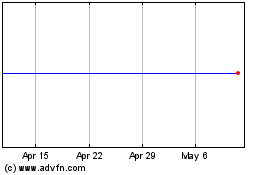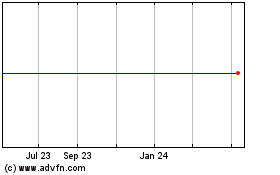BP Tries Again To Siphon Crude From Gulf Leak After Setback
May 15 2010 - 4:33PM
Dow Jones News
BP PLC (BP) said Saturday its latest effort to contain a massive
oil spill in the Gulf of Mexico by siphoning crude from the
deepwater well faced an initial setback, but could be operational
overnight.
The U.K. oil giant is trying to reduce the amount of oil spewing
into the Gulf by threading a tube into broken piping coming from
the well. The tube would carry oil to a tanker at the surface,
stemming at least 5,000 barrels of oil leaking into the Gulf a
day.
During a press briefing, BP Chief Operating Officer Doug Suttles
said an initial attempt to put the tube in place a mile beneath the
surface was unsuccessful, with crews pulling the equipment back to
the surface. The company is making a second attempt Saturday. BP
had planned to begin siphoning oil by now, but warned the process
is challenging at such depths.
"It reflects the reality they are working in," Suttles said.
Engineers for more than three weeks have been trying to contain
the leak caused by the April 20 explosion and sinking, two days
later, of Transocean Ltd.'s (RIG) Deepwater Horizon drilling rig,
which was finishing a well for BP. Eleven members of the crew were
killed by the blast, and the spill threatens shores of several Gulf
Coast states.
BP turned to the siphon plan after a containment dome lowered
over the well failed a week ago. The company has a smaller
containment dome known as the "top hat" on the ocean floor as a
backup to its current effort.
Interior Secretary Ken Salazar said a group of top scientists
led by Energy Secretary Steven Chu plan to meet Sunday to continue
working to stop the deepwater leak.
"We feel the pain. We are frustrated," Salazar said during the
press briefing.
Engineers are working on a system to stop the flow of oil, which
is expected to be ready by the end of next week. These options
include a "junk shot," whereby a variety of materials including
tire pieces, knots of rope and other items would be sent down to
clog the leak. The company is drilling a relief well that is seen
as the ultimate solution to stop the spill, but that is scheduled
to take months.
Also on Saturday, Homeland Security Secretary Janet Napolitano
and Salazar released a letter to BP Chief Executive Tony Hayward
asking him for a clear understanding of the company's commitment to
pay for damages from the spill. The U.S. secretaries wrote that
their understanding is the company will not rely on a federal
liability cap or seek reimbursement from the U.S. government or an
oil spill liability trust fund.
Rough waters and stormy weather hampered offshore cleanup
efforts on Saturday. Crews were unable to sweep offshore waters or
execute controlled burns. They did use chemical dispersants in deep
waters to break up the oil--a relatively untested process that
received federal approval Friday.
As for the effects on the coast, the U.S. Coast Guard has
reported oil sheen at Chandeleur Island off Louisiana and "tar
balls" on beaches in Louisiana, Mississippi and Alabama. The spill
is hitting the offshore fishing industry and keeping tourists away
from the Gulf Coast.
-By Mark Peters, Dow Jones Newswires; 212-416-2457;
mark.peters@dowjones.com
Cooper Cameron (NYSE:CAM)
Historical Stock Chart
From Jun 2024 to Jul 2024

Cooper Cameron (NYSE:CAM)
Historical Stock Chart
From Jul 2023 to Jul 2024
